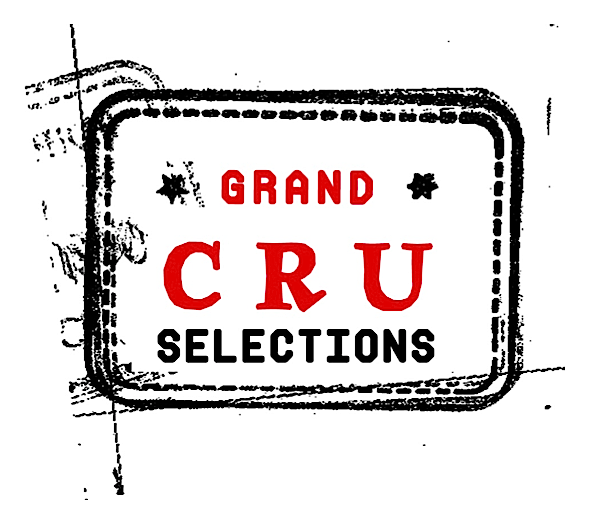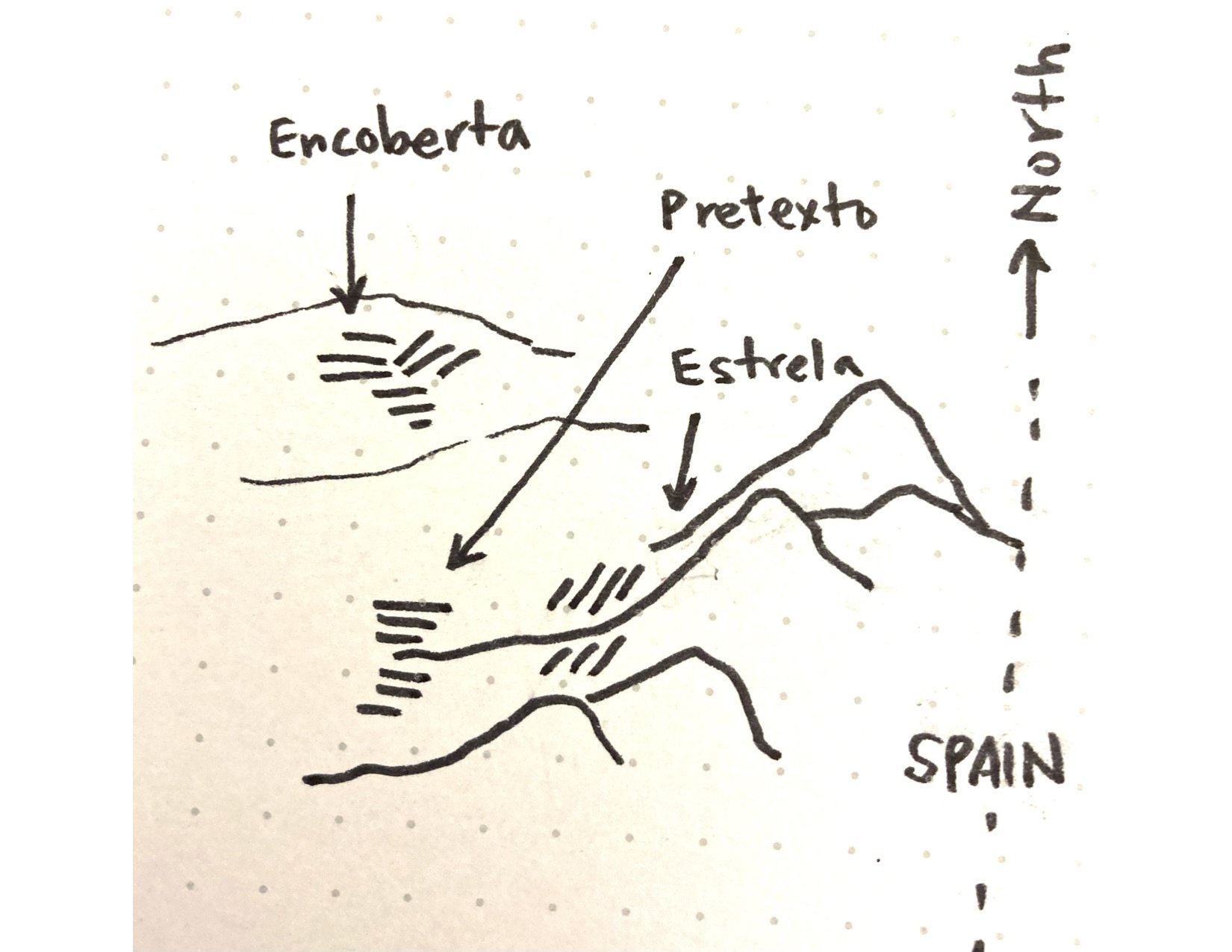Pormenor
Douro Valley, Portugal
Pedro Coelho
The vaulted cliffs of the Duoro-Cima Corgo have nothing in common with the vast flat plains that inspired the pioneering dreams of westward expansion. The distanced traveled here is measured vertically, curvilinear instead of a straight line forward. The horizon is close and sky-high, daunting in very different way. Yet here, where parallel is hard to come by, there is an equal draw for unrealized potential.
On the granite edge of the Távora River, just off the Duoro, GCS was introduced to a different kind of pioneer, Pedro Coelho; a man not intimidated by the change in elevations and less so by the efforts it takes to find his own way. His interpretation of pioneer we found to be compelling. Locked in a land of tradition, he is not looking so much to escape his place, as much as to free the wines from the long-held local trappings. By recognizing what he does not like (the high-alcohol, power and extraction of past days) he seeks freshness, elegance, purity and personality. He does not need to leave home to find this, but his journey requires old-vine with the naturally-balanced raw materials for his exploration. Pedro is all about old vine plots. These are not easy to come by. It takes charm (what Pedro has in excess) to negotiate with old farmers selling (everything overcropped) to the Port houses. And the vines are rarely contiguous, each trip between means an exhaustive fall and climb just to cover, as the crow flies, a few kilometers. Add to his comfort hard, un-forgiving granite, frozen in the wind and remarkably hot in the summer. He has not chosen an easy road.
In short, it takes a sincere “can-do” attitude and the internal drive to go it alone. Pedro seems right at home with this. He is a uniquely solo, cliff-dwelling “garagiste“. We were pleased with the results, all his efforts woven with precision and clarity. Each of his investigations have found something remarkable.
Hats off to our partner, JD Selections, who found him only a few years into Pormenor. We are lucky for the introduction. He will be someone to watch as the old-Duoro is left behind.
-
Pormenor Vinhos was iniatally established in the Douro Valley as the dream of three friends – José Silva, Miguel Cardozo, and Pedro Coelho. Pormenor, meaning “details”, was launched with the 2013 vintage.
Pedro is now the sole driving force behind Pormenor. Raised in the Duoro, he is not new to wine. His father was a a cork producer, his grandfather a barrel maker. He himself worked in the finance side of a port house. Years down that path he realized “someone in the family should produce and drink!” Thus Pormenor was born.
Luis Seabra, a mentor and close consultant from the beginning left Pedro to his own in 2018. In total, he works 25ha of vines, with 3.5ha under his ownership. As he looks to purchase the rest, he contracts with the “old-timers” hiding forgotten vines in the nooks and crannies. The vines range from 40 to 95 years old. planted at high altitudes.
The winery is for now, an honest garage. With the door fully open, it feels exposed, like part of the landscape itself. Inside is a few inox tanks and a collection of barrels, large and old. There is just enough space beside his holding tanks to squeeze in grapes during harvest, just as the last bottles of the previous vintage are leaving. Temperature control is not in effect, but the cold here can be penetrating, which is ideal for his slow-natural fermentations. Remarkably, everything is orderly, efficient and manageable. Clearly, to Pedro, details is more than just a name.
-
The Cima Corgo, in the centre of the Douro valley is an upland wine-growing area par excellence. Its central location in the valley provides a relatively balanced climate. Although the summers are as torrid as elsewhere in the valley, there is at least the compensation of an adequate level of rainfall for grape growing. The schist is everywhere, giving wines here distinct minerality and delicacy. Underground, great foliated sheets sequester precious pockets of moisture where the vine roots can find sustenance. Most of Pedro’s vines are North/Northeast exposures, protecting the vines from the severe sunshine. Altitudes can range from 600-750m.
-
Pormenor is focused on organic farming practices and pruning the old vines to better health is a long but promising mission. Pedro works with indigenous varietals only, with naturally low yields from the 40-95 yr old plants. Picking dates are earlier than the neighbors, sometimes weeks ahead. The old folk think his new ways crazy, but his one goal is an incredible portrayal of the historic Douro Valley.
-
All thoughts in the cellar lean toward wines as lens to the natural conditions of each vintage. Fermentation occurs only with native, wild yeasts. The Branco and Tinto are fermented in stainless steel tank, the reservas in older french oak. Specific to the whites, there is no Malo-ferments and no battonage. The reds see some combination of whole cluster and post-fermentation macerations. All wines are naturally racked (although not gravity fed), with as gentle movement as possible.
Wines
Branco 2019
Grapes: Rabigato, Malvasia Fina, Codega do Larinho, Gouveio
Vinification: The grapes were harvested in the last week of August and first week of September to achieve a good natural acidity and a balanced maturation. The grapes come from old vines, starting at 40 years old and planted between 450m to 650m, in Candedo and Pombal de Ansises. Grapes are carefully sorted, gently pressed, and the juice is naturally decanted for 24 hours at low temperature. Spontaneous fermentation with natural yeasts in mostly stainless steel and a small part in French oak. No malo, no battonage.
Reserva Branco 2019
Grapes: 90% Rabigato, 10% Malvasia Fina
Vinification: After careful selection, the best grapes are gently pressed and the must was decanted for 24 hours. Fermentation is spontaneous with indigenous yeasts. Fermentation and ageing on the lees for 10 months in used French oak barrels with no temperature control. No malo or battonage.
Harvest: Third week of September
Soil: Schist
Altitude: Between 600m to 700m in Pombal de Ansiaes - Douro Superior
Branco and Reserva Branco come from the same place. Exposition is different. Reserva vines he owns, the Branco he rents.
Tinto 2018
Grapes: Touriga Franca, Tinta Roriz, Tinta Amarela, Tinta Barroca, Rufete
Vinification: Vines are more than 60 years old, face East and North, and are planted at over 500m altitude in Soutelo do Douro, Cima Corgo. 2018 was a warm vintage with low productions. Grapes are gently pressed after sorting. Fermentation is spontaneous with indigenous yeasts and takes place in stainless steel. Maceration during and after the fermentation for a total of four weeks with light pumpovers in order to extract the minimum possible and achiever round, smooth tannins. Elevage in used French oak, 225lt, for 20 months.
Very warm climate - picked at the same time as the whites partial whole cluster
Trilho Tinto 2018
- 500-700 meters altitude, schist/granite
- maturation is much slower
- fermentation is large wooden vats, 2-4 months depending on vintage
- Touriga Franca, Tinta Barroca, (one more grape)
- more whole cluster


